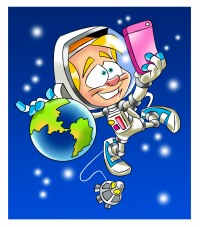Homeschool Science Curriculum for 3rd Grade
A solid homeschool science curriculum for 3rd grade helps students better understand and engage with the world around them. Many current events and global issues, like weather patterns, natural disasters, medical advancements, or technological developments, are grounded in science.
Sample Homeschool Science Curriculum for 3rd Grade
Weeks 1-4: Ecology and Habitats
1. Ecosystem Introduction
- Understand the basic concept of ecosystems.
- Activity: Create a terrarium.
2. Desert and Rainforest Habitats
- Differences, types of plants and animals.
- Craft: Design a split habitat showcasing both.
3. Ocean and Wetlands Habitats
- Learn about marine life and marshy areas.
- Project: Create an ocean-in-a-bottle.
4. Mountain and Polar Regions
- Explore flora and fauna.
- Activity: Snow and ice melting experiments.
Weeks 5-8: Human Body Systems
5. Digestive System
- Journey of food through the body.
- Craft: Make a model of the digestive tract.
6. Respiratory System
- How we breathe and the role of lungs.
- Experiment: Measuring breath using balloons.
7. Circulatory System
- Heart, blood, and vessels.
- Activity: Listen to heartbeats and discuss the purpose of blood.
8. Nervous System
- Brain, nerves, and senses.
- Activity: Reflex tests and sensory exploration games.
Weeks 9-12: Forces and Motion
9. Gravity and Weight
- Newton's apple, weight vs. mass.
- Experiment: Drop objects of different sizes and shapes.
10. Friction and Resistance
- How friction affects movement.
- Activity: Slide shoes on various surfaces.
11. Magnets and Magnetic Fields
- Explore magnet properties.
- Experiment: Magnetic field with iron filings.
12. Simple Machines Deep Dive
- Focus on screws, wedges, and gears.
- Hands-on: Dissect a simple clock or toy to see gears.
Weeks 13-16: Earth and Space
13. The Solar System
- Planetary overview, including dwarf planets.
- Activity: Solar system mobile.
14. Stars, Galaxies, and Constellations
- Basics of what stars are and how galaxies form.
- Night observation, identify major constellations.
15. The Moon and Its Phases
- Lunar cycle, craters, and moon exploration.
- Activity: Moon phase calendar.
16. Earth's Rotation and Revolution
- Day-night cycle and seasons.
- Activity: Sun's path charting or shadow observation

Weeks 17-20: Matter and Energy
17. States of Matter
- Solids, liquids, gases, and plasma.
- Experiment: Heating and cooling substances.
18. Atoms and Molecules
- Basic atomic structure.
- Craft: Build a simple atom model.
19. Forms of Energy
- Mechanical, chemical, electrical, etc.
- Activity: Energy scavenger hunt in the house.
20. Heat Transfer
- Conduction, convection, radiation.
- Experiment: Heat transfer through different materials.
Weeks 21-24: Weather and Climate
21. Water Cycle
- Evaporation, condensation, precipitation.
- Craft: Water cycle wheel.
22. Weather Patterns
- Fronts, pressure systems, and predicting weather.
- Activity: DIY barometer.
23. Natural Disasters
- Hurricanes, tornadoes, floods, and droughts.
- Project: Research a recent natural disaster.
24. Climate Zones
- Differences between climates around the world.
- Activity: Climate zone map coloring.
Weeks 25-28: Light and Sound
25. Light Properties
- Reflection, refraction, and absorption.
- Experiment: Bend light using a glass of water.
26. Colors and Prism
- Splitting and combining colors.
- Experiment: Sunlight through a prism.
27. Sound Waves
- How sound is produced and travels.
- Activity: DIY string telephone.
28. Pitch and Volume
- Experiment with different sound sources.
- Activity: Make simple musical instruments.
Weeks 29-32: Geology and Paleontology
29. Types of Rocks
- Igneous, sedimentary, metamorphic.
- Activity: Rock collection and classification.
30. Fossils and Imprints
- How fossils form.
- Craft: Make imprints using clay and objects.
31. Dinosaurs and Prehistoric Animals
- Study of different dinosaur types.
- Project: Dinosaur research poster.
32. Plate Tectonics
- Introduction to Earth's plates.
- Experiment: Cracker plate tectonics in a soup (to show movement).
Weeks 33-36: Review and Exploration
33. Favorite Topics Review
- Student revisits their favorite topics.
34. Science Fair Preparation
- Begin a project or experiment based on a chosen topic.
35. Science Fair Presentation
- Display and share with family or a homeschool group.
36. Year-End Reflection
- Discuss the year's learnings, favorite experiments, and what they're excited to learn next.
This homeschool science curriculum for 3rd grade can be adjusted based on the child's interests and available resources. Always aim to include practical activities, experiments, field trips, and multimedia content to make the experience engaging and diverse.
Homeschool Science Curriculum Samples
Homeschool Science Curriculum for Kindergarten
Homeschool Science Curriculum for 1st Grade
Homeschool Science Curriculum for 2nd Grade
Homeschool Science Curriculum for 3rd Grade
Homeschool Science Curriculum for 4th Grade
Homeschool Science Curriculum for 5th Grade
Homeschool Science Curriculum for 6th Grade



